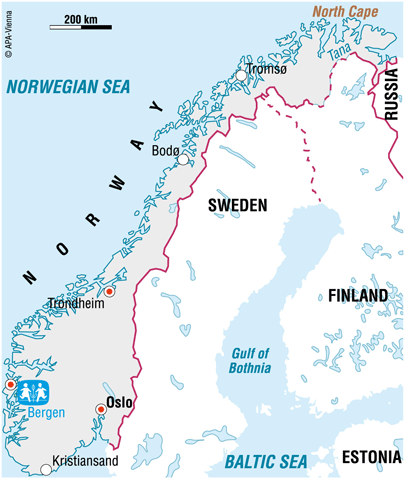
SOS Children's Villages has been present in Scandinavia since the early 1960s. In June 1964, the "Komiteen for norske venner av SOS-barnebyer" (Committee of Norwegian Friends of the SOS Children's Villages) was founded to support the worldwide activities of SOS Children's Villages.
At first individual family houses were built in different SOS Children's Villages across the globe, but as the organisation grew, SOS Children's Villages Norway was able to finance a complete SOS Children's Village in Rajshahi, Bangladesh in 1979 with Norweigian funds. In 1983 the Norwegian Association was renamed the "Stiftelsen SOS-barnebyer Norge”. Since 2008, the association has been working in Bergen with children and families in need of support.
(You will receive a Canadian charitable tax receipt)
Please help us ensure a loving home for every child. Sponsor a child in Norway now.
For just $36/month you can sponsor a child and help provide an orphaned or abandoned child with:
- A safe and nurturing home
- A loving SOS mother
- Quality education
- Healthcare
- Nutritious food
- Clothing and toys
- All the things necessary for a bright future
SOS Children's Villages in Norway
In addition to supporting children and their families abroad, the Norwegian Association had wanted to set up an SOS Children's Village since the early 1970s. In 2004 the board of directors gave the go-ahead for the first SOS Children's Village in Bergen on the Western coast. The project was thoroughly prepared and the first Norwegian SOS Children's Village was opened in Bergen in 2008.

Norway is a constitutional monarchy in Northern Europe situated on the Scandinavian Peninsula. The country borders Sweden in the east, Finland and Russia in the north-east, with the rest of Norway bordered by the sea in the west and in the south. Norway's capital city is Oslo with about 1.4 million people. Bergen, where the SOS Children's Village is located, is the second largest city.
Norway has a population of about 4.7 million. There is a Sami minority of about 60,000. In 2011, about 17 per cent of the population had an immigrant background. These minorities include people of European origin as well as people from Canada, the USA, Australia and New Zealand. The official language is Norwegian, with the Sami minority using their native language.
The country has many natural resources and is one of the world's largest petroleum and gas exporters. These exports provide an important source of income.
An egalitarian society with a high standard of living
Norway has one of the best living standards in the world, with one of the highest GDP per capita rates. Norway ranks extremely high on the United Nations Development Index. There is a high life expectancy rate, and a low infant mortality rate.
Norway's unemployment rate is very low at 3.6 per cent (2010 est.). Around 2.9 per cent of the active population works in agriculture, 21 per cent in industry and 76 per cent in the service sector.
Norway is an egalitarian society: income differences are small and good quality health care and education is available to all. The city of Oslo holds an annual Freedom Forum which is an important meeting point for the discussion of human rights.
Although the overall poverty rate is low, and the state invests heavily in social welfare, the level of poverty among the immigrant population, especially Pakistani, Turkish or Asian immigrants, is surprisingly high.
Situation of the children in Norway
There are 1.1 million children under the age of 18 in Norway. Children, and their rights, play a central role in Norwegian culture. The Ombudsman for Children exists to protect these rights. Norwegian children have to go to school for ten years, but most attend longer.
Most children live with their birth parents, but the number who live with only one of their parents is increasing. Although the model of the family is changing in Norway, the effects on children's lives are limited by the extensive provisions of the welfare state.
In spite of the generally favourable conditions, according to national statistics, around 34,000 children were receiving assistance or were under protection from the state in 2008. It is estimated that around five to ten per cent of children experience some form of physical or sexual abuse. About five per cent report that they have been bullied in school. Nearly 100,000 children are exposed to repetitive domestic violence.
Our Impact
Image
The SOS Children's Village in Norway provides loving homes to orphaned and abandoned children |
1 VILLAGES | 15 Orphaned and Abandoned Children |

